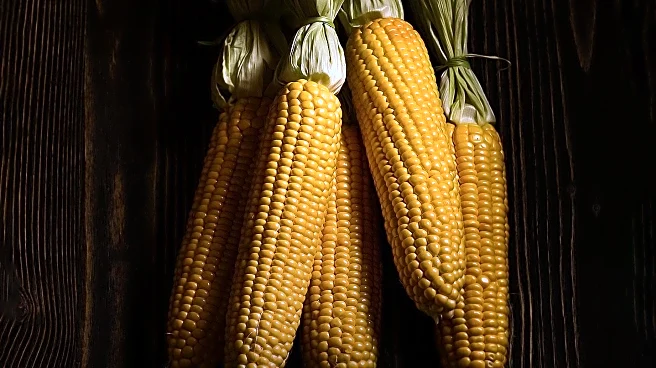What is the story about?
What's Happening?
Farmers often face challenges with wildlife damaging their sweet corn crops, particularly during harvest time. According to an article from the University of Massachusetts, various animals such as birds, deer, raccoons, squirrels, and even black bears are known to invade corn patches. Each animal leaves distinct signs of damage, which can help farmers identify the culprit. Birds tend to peck at kernels, leaving a 'firecracker look' on the cobs, while deer may bite off the tips or carry entire cobs away. Raccoons are known for knocking over stalks and stripping husks, whereas squirrels leave scattered corn pieces near wooded areas. Bears typically target the middle of the field, knocking down stalks but leaving most corn uneaten. Becky McPeake, a former Extension wildlife expert at the University of Arkansas, suggests using deterrents like electric fences, noises, and scarecrows. Additionally, she recommends wrapping duct tape around corn husks to prevent raccoons and deer from stripping them.
Why It's Important?
Managing wildlife damage is crucial for farmers to protect their crops and ensure a successful harvest. Sweet corn is a valuable crop, and losses due to animal interference can significantly impact a farmer's yield and income. Understanding the specific signs of damage can help farmers implement targeted strategies to deter different animals effectively. The advice provided by experts like Becky McPeake offers practical solutions that can be easily applied, especially for small-scale farmers. By minimizing crop losses, farmers can maintain their production levels and contribute to the agricultural economy. Furthermore, these strategies can help reduce the need for more drastic measures, such as culling wildlife, promoting a more harmonious coexistence between agriculture and local ecosystems.
What's Next?
Farmers may continue to explore and implement various deterrent methods to protect their crops from wildlife damage. As the agricultural community shares experiences and strategies, new and innovative solutions may emerge. Additionally, ongoing research and extension services can provide updated information and techniques to help farmers adapt to changing wildlife behaviors and environmental conditions. Collaboration between farmers and wildlife experts can lead to more sustainable practices that benefit both agriculture and wildlife conservation.
Beyond the Headlines
The issue of wildlife damage to crops highlights the broader challenge of balancing agricultural practices with environmental conservation. As human activities encroach on natural habitats, wildlife may increasingly turn to farmland for food, leading to conflicts. This situation underscores the importance of developing agricultural practices that consider ecological impacts and promote biodiversity. By fostering a deeper understanding of wildlife behavior and implementing humane deterrent methods, farmers can contribute to the preservation of local ecosystems while safeguarding their livelihoods.
AI Generated Content
Do you find this article useful?














